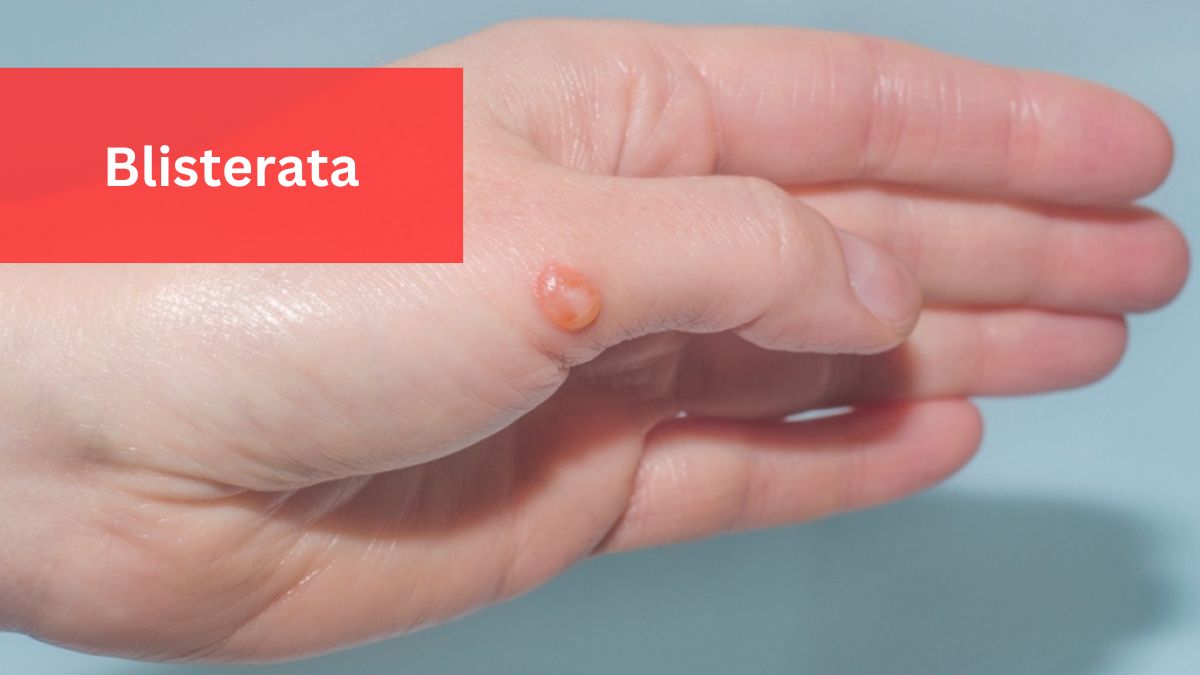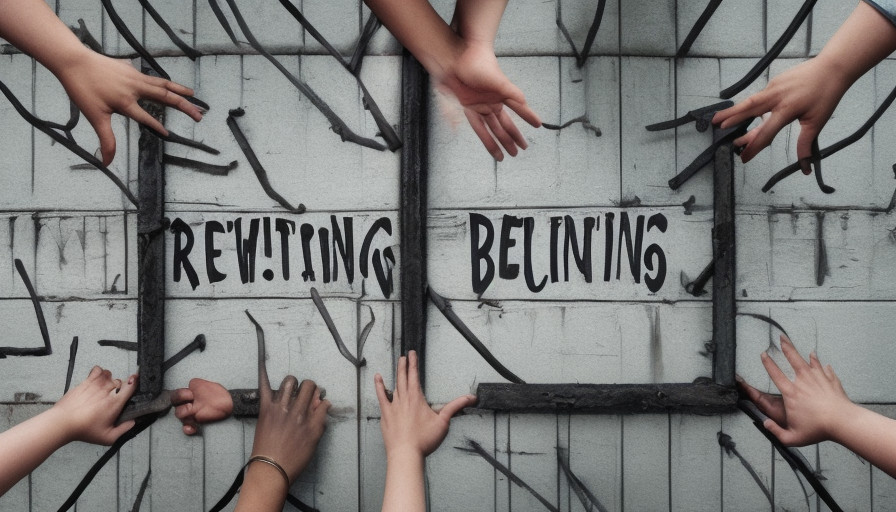I’ll tell you about Blisterata, something I’ve unfortunately had personal experience with. It’s this pesky skin condition that’s all about these annoying blisters popping up on your skin. Trust me, it’s not fun dealing with them.
From what I’ve learned, Blisterata can be caused by a bunch of things, like genetics, the environment, and even your lifestyle habits.
Blisterata is a skin problem where blisters form on your skin. These blisters can be small or big and show up anywhere on your body. It happens because of genes, things in your environment, and how you live. Dealing with Blisterata can be tough.
In this article, we’ll dive into everything you need to know about Blisterata. We’ll talk about what it is, what causes it, what the symptoms are, and how doctors diagnose it. Then, we’ll get into the nitty-gritty of how to treat Blisterata and ways to prevent it from coming back.
What Is Blisterata? – Detailed Answer Here!
Blisterata is a skin disorder characterized by the formation of blisters on the skin’s surface. These blisters may vary in size and can occur anywhere on the body.
While the exact cause of Blisterata is not fully understood, it is believed to result from a combination of genetic predisposition, environmental factors, and lifestyle habits.

What Causes Blisterata? – Here’s A Closer Look At Each Contributing Factor!
Blisterata, a dermatological condition characterized by the formation of blisters on the skin, can be attributed to a combination of genetic predisposition, environmental factors, and lifestyle habits. Here’s a closer look at each contributing factor:
Genetic Factors:
Certain gene mutations can make individuals more susceptible to developing Blisterata. While the specific genes involved may vary, genetic predisposition plays a significant role in the development of this condition.
A family history of Blisterata or related skin disorders can increase the risk for an individual.

Environmental Triggers:
Exposure to various environmental factors can trigger or exacerbate symptoms of Blisterata. These triggers may include: Prolonged exposure to sunlight, particularly ultraviolet (UV) radiation, can worsen symptoms of Blisterata.
Protecting the skin from direct sunlight and using sunscreen with a high SPF can help minimize the risk of flare-ups. Contact with harsh chemicals, such as those found in certain skincare products, detergents, or cleaning agents, can irritate the skin and contribute to the development of blisters.
Some individuals may experience allergic reactions to certain substances, such as latex or specific foods, which can manifest as blisters on the skin.
Lifestyle Habits:
Certain lifestyle habits can also play a role in the development of Blisterata: Tobacco smoke contains harmful chemicals that can impair skin health and exacerbate inflammation, potentially worsening symptoms of Blisterata.
Psychological stress can have a significant impact on overall health, including the skin. Stress may trigger or exacerbate flare-ups of Blisterata, emphasizing the importance of stress management techniques.
Inadequate skincare practices, such as excessive scrubbing or using harsh soaps, can disrupt the skin’s natural barrier function and increase susceptibility to skin disorders like Blisterata.
Read Also: Exploring the Multifaceted Nature of Deț – Uncover Secrets!
How is Blisterata Diagnosed? – The Diagnosis Process May Include The Following Steps!
When diagnosing Blisterata, a doctor or skin specialist will first ask questions about your health and look at your skin closely. They’ll check where the blisters are and how big they are. Sometimes, they might need to do some tests to be sure it’s Blisterata and not something else.

These tests might include:
- Skin Biopsy: They might take a tiny piece of skin to look at under a microscope. This helps them see if there are signs of Blisterata.
- Blood Tests: They might take some blood to see if there are any markers in it that suggest you have Blisterata.
- Allergy Tests: If they think something you’re allergic to is causing the blisters, they might do tests to find out what it is.
The doctor will also need to make sure it’s not another skin problem that looks similar to Blisterata. Sometimes, they might need to ask other doctors for help to figure out exactly what’s going on.
What Are The Treatment Options Available For Blisterata?
Treating Blisterata involves different methods to ease discomfort and help the skin heal. Doctors might give medications like creams or pills to reduce swelling and itching. Special lotions like calamine can also soothe the skin.
Some people benefit from light therapy, where they’re exposed to controlled amounts of light to calm down inflammation. If these don’t work, stronger medicines or injections targeting the immune system might be needed. Pain can be managed with over-the-counter pills.

Taking care of any open sores with gentle cleaning and bandages is crucial to prevent infections. Lifestyle changes like avoiding things that trigger flare-ups, managing stress, and keeping the skin clean can also make a big difference.
Working closely with doctors to find the right treatment plan is important for feeling better and improving the quality of life. Regular check-ups and adjustments to treatment might be needed to make sure everything’s working well.
Read Also: Hokkaido Beach – Experience the Enchantment!
How Can I Prevent Blisterata From Getting Worse? – Follow Easy Ways!
Preventing Blisterata means avoiding things that can make it worse. This includes staying out of the sun, using gentle products on your skin, and finding ways to relax when you’re stressed. Having a skincare routine that suits your skin can also help.
If others in your family have Blisterata, talking to a genetics expert can give you more information about what might trigger it for you. These steps can help make Blisterata flare-ups less frequent and less severe, but it’s important to talk to a doctor for advice that’s right for you.
How Can I Make Living With Blisterata Easier?

Living with Blisterata can be tough, but there are ways to make it easier. Here are some simple tips to help you manage:
- Get Support: Talk to your family, friends, and doctors about how you’re feeling. They can offer support and help you through tough times.
- Find Ways to Relax: Try activities like deep breathing, meditation, or doing things you enjoy to help you relax and feel better.
- Stick to Your Treatment: Take your medicine and use creams as your doctor tells you. Following your treatment plan is important for keeping your skin healthy.
- Keep an Eye on Your Skin: Check your skin regularly for any changes or problems. Keeping track of how your skin looks and feels can help you and your doctor manage your condition.
- Ask for Help if You Need It: If you’re feeling sad or worried, talk to someone you trust or a counsellor. It’s okay to ask for help when you need it.
- Teach Others About Blisterata: Help others understand what Blisterata is and how it affects you. Sharing information can make it easier for people to support you.
Remember, everyone’s experience with Blisterata is different. Find what works best for you and don’t be afraid to ask for help when you need it. With the right support and care, living with Blisterata can become more manageable.
Read Also: Retroya – A Journey into Nostalgia and Timeless Style!
What’s Being Done To Learn More About Blisterata And Improve Treatments In The Future?
In the world of Blisterata research and what lies ahead, scientists are making big strides in many areas. They’re trying to find special marks in our genes that are linked to Blisterata.
If they can find these marks, it could help doctors diagnose the condition better and make treatments that fit each person’s genes. At the same time, they’re digging into how Blisterata works on a tiny level, looking for places to target with new treatments.

They’re also trying out new treatments, like different kinds of medicine and creams, to see if they work better and have fewer side effects than what we use now.
New technology is also making a big difference. Scientists are using fancy tools to look at lots of genetic info and even try editing genes to see if it helps. And they’re testing these new treatments in hospitals to make sure they’re safe and really work.
Overall, all these efforts in research are giving hope for better understanding and treatments for Blisterata, aiming to make life easier for those dealing with this skin problem and their families.
Frequently Asked Questions (FAQs):
1. Is Blisterata a contagious condition?
No, Blisterata is not contagious. It is a dermatological condition that results from various factors such as genetic predisposition, environmental triggers, and lifestyle habits.
2. Can Blisterata be cured completely?
While there is no cure for Blisterata, treatment options are available to manage symptoms, prevent flare-ups, and promote healing. It’s essential to work closely with healthcare professionals to develop a personalized treatment plan.
3. Are there any lifestyle changes I can make to manage Blisterata better?
Yes, lifestyle modifications such as avoiding triggers like sunlight and harsh chemicals, managing stress levels, and adopting a skincare regimen tailored to your needs can help manage Blisterata effectively.
Conclusion:
Blisterata is a skin problem that needs different kinds of help to be treated. If we know what causes it, how it makes us feel, how doctors find it, how to treat it, and how to stop it from coming back, we can do things to feel better and have a better life.
It’s very important to talk to doctors who know about Blisterata so they can help us in the best way for each person.
Must Read:













































Leave a Reply